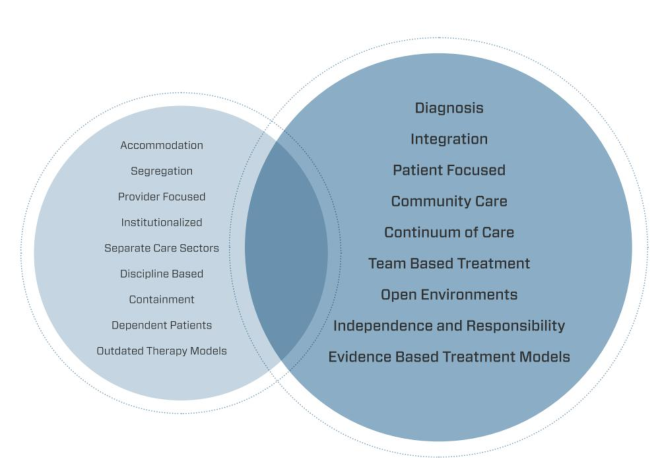Delivering a safe and appealing environment in a mental health or behavioural health facility has always been a design challenge.
With the Australian Bureau of Statistic stating that hanging is the most frequent method of suicide, one that is used in over 56% of all suicide deaths, the importance of room design in mental health facilities cannot be dismissed.[1] Private areas such as bedrooms and bathrooms pose the most prominent risks, so it is important for designers to eliminate or minimise ligature points.[2]
The growing amount of dedicated research continues to highlight the fact that the optimal environments for patients of mental health facilities are ones that mimic a homely environment. A paper by Gabb et al in 1992, found that most environmental psychologists agree that the physical environment can reinforce and encourage appropriate behaviour. [3] With this in mind, 'normalisation' has become more common than the traditional clinical environments of the past, that focussed on safety aspects, rather than aesthetic and design aspects.
A paradigm shift regarding the trends impacting behavioural health design can be seen below, outlining the change in how mentally ill patients are cared for and treated [4]:

The onus is on the designers to create spaces that promote rehabilitation, recovery and healing. Incorporating elements that feel familiar and welcoming.
As the future of mental health facility design evolves, the scope of issues and considerations will continue to grow. With safety and security at the forefront, it is paramount that continued research and investment into design is carried out to provide positive outlooks and outcomes.
[1] “Causes of Death, Australia, 2014 – Method of Intentional Self-Harm,” ABS, http://www.abs.gov.au/ausstats/abs@.nsf/Lookup/by%20Subject/3303.0~2014~Main%20Features~Method%20of%20Intentional%20self-harm~10053, (Accessed July, 2018).
[2] “Brief Guide for Inspection Teams – Ligature Points,” Care Quality Commission, https://www.cqc.org.uk/sites/default/files/20150328%20CQC%20mental%20health%20brief%20guide%20-%20Ligature%20points.pdf, (May, 2015)
[3] Betsy Gabb, Kathryn Speicher and Kathleen Lodl, “Environmental Design for Individuals with Schizophrenia: An Assessment Tool,” Journal of Applied Rehabilitation Counseling 23, no. 2, (1992): 35–40.
[4] “Best Practices in Behavioral Health,” Array Architects, https://issuu.com/arrayarchitects/docs/best_practices_in_behavioral_health, p. 14, (August, 2016).
